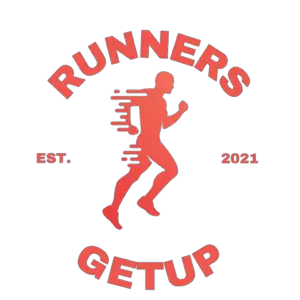This post contains affiliate links.
After a few weeks of deciding whether or not I should buy a fitness tracker, I finally did it. I was amazed by how helpful it is so I wanted to share with you what fitness trackers track and why it’s important.
Fitness trackers track several important metrics such as heart rate, stress, VO2 max, sleep, oxygen saturation, calories, and steps. These metrics help in keeping track of your overall health as well as athletic performance.
Ahead, we will look at each of these items in detail. So keep on reading to find out more.
1. Heart Rate
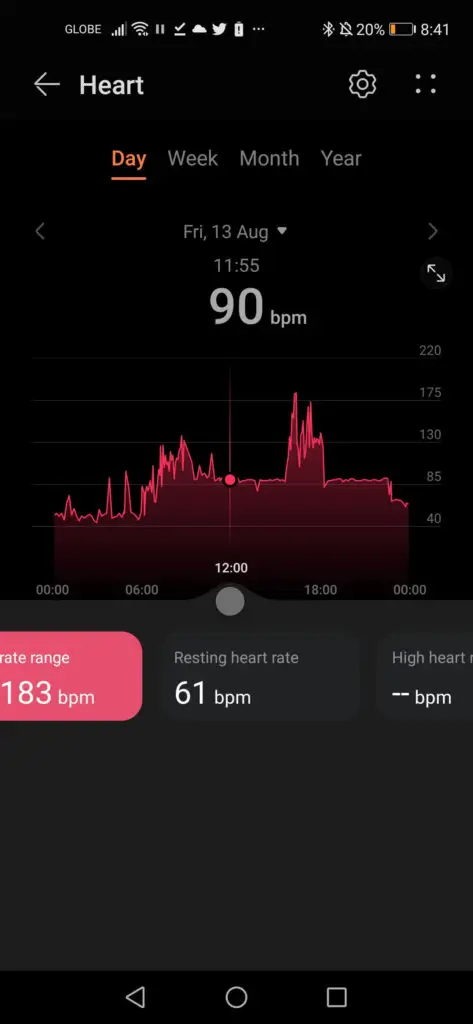
Fitness trackers have a built-in heart rate monitor that tracks the number of times your heart beats per minute (bpm). It works by tracking your blood flow using a photoplethysmography (PPG) light sensor that can detect blood volume changes at the skin’s surface.
The normal resting heart rate for a healthy adult is 60-100 bpm. However, athletes and physically fit individuals may have lower resting heart rates (mine is 61 bpm).
If you’re wondering what fitness tracker I’m using, it’s the Huawei GT2 Pro which I highly recommend. It’s packed with all the basics such as a heart rate monitor and calorie counter plus it has a sleep tracker, music player, built-in GPS, and more than 100 workout modes to choose from.
Why it’s important: Athletes and fitness enthusiasts use the heart rate monitor to determine pace and recovery. Most fitness trackers feature a gauge of the workout “zone” through the heart rate monitor.
In addition, you can measure how “recovered” you are by referring to your baseline resting heart rate. Some fitness trackers do it for you.
2. Stress
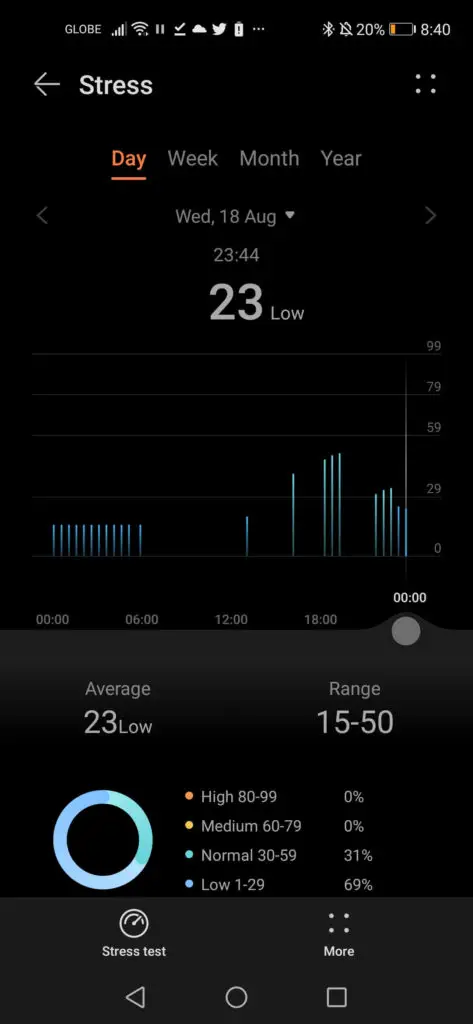
One of the newest features of fitness trackers is stress tracking. It can measure your stress through heart rate variability — the measurement of time intervals between heartbeats.
Why it’s important: Stress is one of the most common reasons for a decline in performance. Knowing when we are stressed allows us to take action by taking a step back and take a breather. Oh, and by the way, some fitness trackers have a built-in breathing exercise program.
3. VO2 Max
According to Healthline “VO2 Max is the rate of oxygen your body can use during exercise”. VO2 Max is accurately measured in the laboratory, however, not everyone has access to it.
Some fitness trackers feature a VO2 Max tracker, however, this is not a very accurate way to measure. Nevertheless, the VO2 Max monitor in the fitness tracker can give you a glimpse of where you’re at in your fitness level.
Why it’s important: VO2 Max has been the metric used by endurance athletes to determine their fitness level. Knowing where you are at in terms of your VO2 Max allows you to improve several aspects of your training or make changes in your program.
4. ECG (electrocardiogram)
According to hopkinsmedicine.org, ECG measures the rhythm of your heartbeat as well as the strength and timing of the electrical impulses. Instead of measuring the number of times, your heart beats in a minute, ECG takes a look at the quality of your heartbeat.
The first fitness tracker to feature an ECG was the Apple Watch Series 4 but has now made its way to Samsung Galaxy watch 4, Fitbit Sense, and more.
Why it’s important: ECG is used to detect various heart diseases, but ECG is usually done in a medical facility.
Having them at your risk allows you to detect potential heart problems early and seek help from a medical professional.
5. Sleep
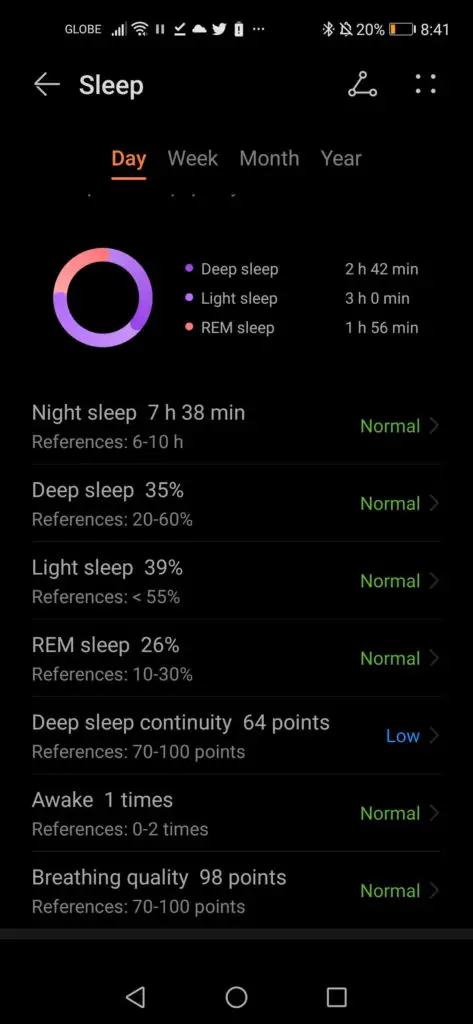
Before fitness trackers, people usually gauge whether the sleep is good or bad based on the duration. Now, fitness trackers give you the ability to track sleep duration AND sleep quality which is as important as the former.
Why it’s important: Sleep is one of the most important factors that can affect your overall health and athletic performance. However, most people simply neglect it.
The book Why We Sleep shed light on the untapped potential of sleep as well as the dangers of poor sleeping habits.
Having a way to track your sleeping habits allows you to make the necessary changes required to achieve better sleep quality.
Off script here: If you want to listen to the book while you run (which frankly is more fun than music), you can do so by signing up for Audible’s 30-day FREE trial. You can cancel anytime.
6. Oxygen Saturation
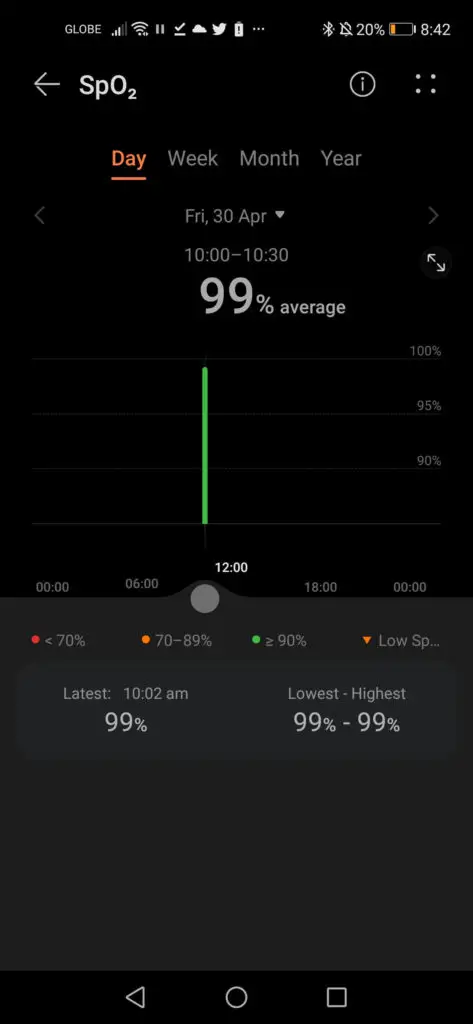
Oxygen saturation (SPO2) measures the amount of oxygen in your bloodstream. Fitness trackers do that with the use of reflectance pulse oximetry — a method by which the light that passes through the skin and is reflected from subcutaneous tissue and bones is measured.
Why it’s important: This feature is especially useful for individuals with underlying health problems such as asthma and COPD.
7. Steps, Cadence and Stride length
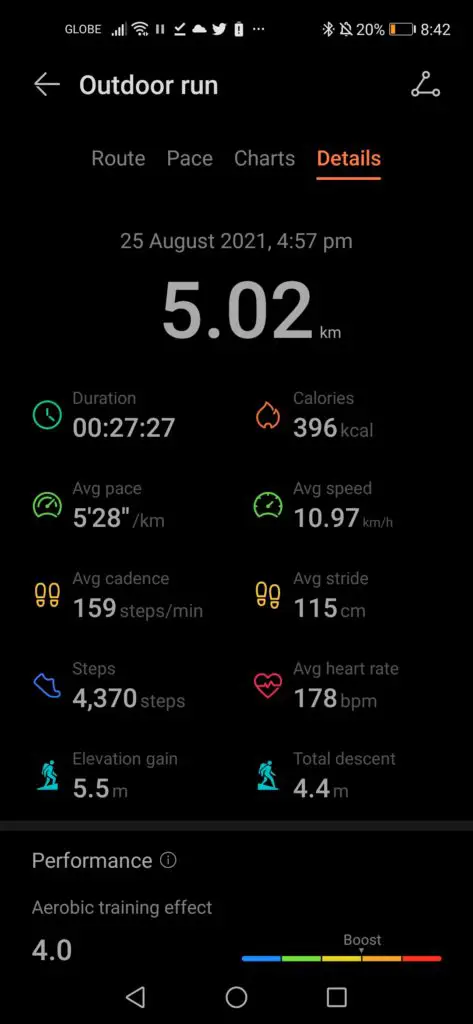
Fitness trackers are equipped with accelerometers and gyroscopes that determine the number of steps you take.
According to CDC, we should take at least 10,000 steps per day which are linked to a number of health benefits including improved blood pressure and weight control.
Why it’s important: Accelerometers not only track the total number of steps but also the number of steps per minute (cadence) and stride length.
These metrics tell you a lot about your running gait.
8. Elevation Gain and Loss
Elevation gain is the total number of climbs while elevation loss is the total number of descent measured in meters. Most running watch is equipped with an altimeter used for tracking elevation gain and loss.
Why it’s important: Being able to track elevation gain and loss gives you more training options that will help you improve your overall fitness.
9. Calories
The ability to measure the calories burned is probably the most sought-after feature of a fitness tracker. It does that with the help of two factors: accelerometer and your basal metabolic rate (BMR)
Why it’s important: Knowing the estimated amount of calories burned through your activities will help you determine what and how much you eat. Calories burned are an important factor to consider in your diet plan.
10. Distance
Fitness trackers do this using two methods: GPS and non GPS.
Fitness trackers and smartwatches with built-in GPS are the most accurate. They use GPS satellites (the same way Google maps tracks distance) to determine the total distance you covered in your activity.
Garmin Forerunner 245 and the Fitbit Charge 4 are few examples of fitness trackers with a built-in GPS.
Fitness trackers without GPS like the Fitbit Inspire 2 use the accelerometer to give you an estimate of the total distance covered. They’re usually way cheaper than those with built-in GPS.
Why it’s important: Distance is important for a lot of sports including running, swimming, and cycling. Athletes create a training plan based on race distance and they measure progress by comparing time and distance.
Final Thoughts
Fitness trackers and smartwatches are helpful tools to improve our overall health and athletic performance. It’s important to choose the right fitness tracker that is fit for your need.
Endurance athletes such as cyclists, runners, and triathletes can benefit most from fitness trackers with built-in GPS, while those who use fitness trackers for their basic features such as heart rate and calories burned can find value in a cheaper, no built-in GPS fitness tracker.
Technology is improving fast and we’ll likely see more features from these fitness trackers and smartwatches very soon.
